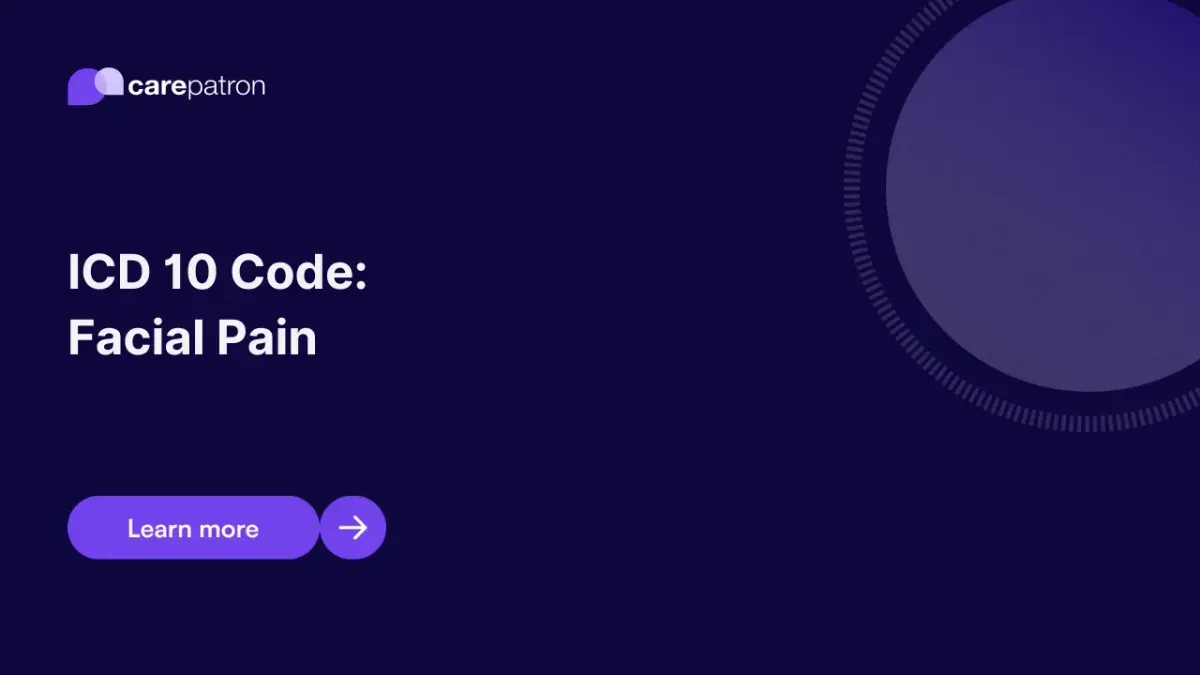
Facial Pain ICD-10-CM Codes
Explore ICD-10-CM diagnosis codes for facial pain. Learn about common codes, billable statuses, and gain clinical insights in this comprehensive guide.
Use Code
Commonly asked questions
Yes, tension-type headaches can cause facial pain. These headaches often result in a dull, aching pain that can be felt in various parts of the head and face.
Trigeminal neuralgia is a rare but significant cause of severe facial pain. It is characterized by sudden, sharp, and intense pain in the face, often triggered by simple activities like eating or talking.
If you experience persistent or severe facial pain, it is essential to consult a healthcare professional for a thorough evaluation. The underlying cause of the pain must be determined for appropriate treatment.
EHR and practice management software
Get started for free
*No credit card required
Free
$0/usd
Unlimited clients
Telehealth
1GB of storage
Client portal text
Automated billing and online payments
